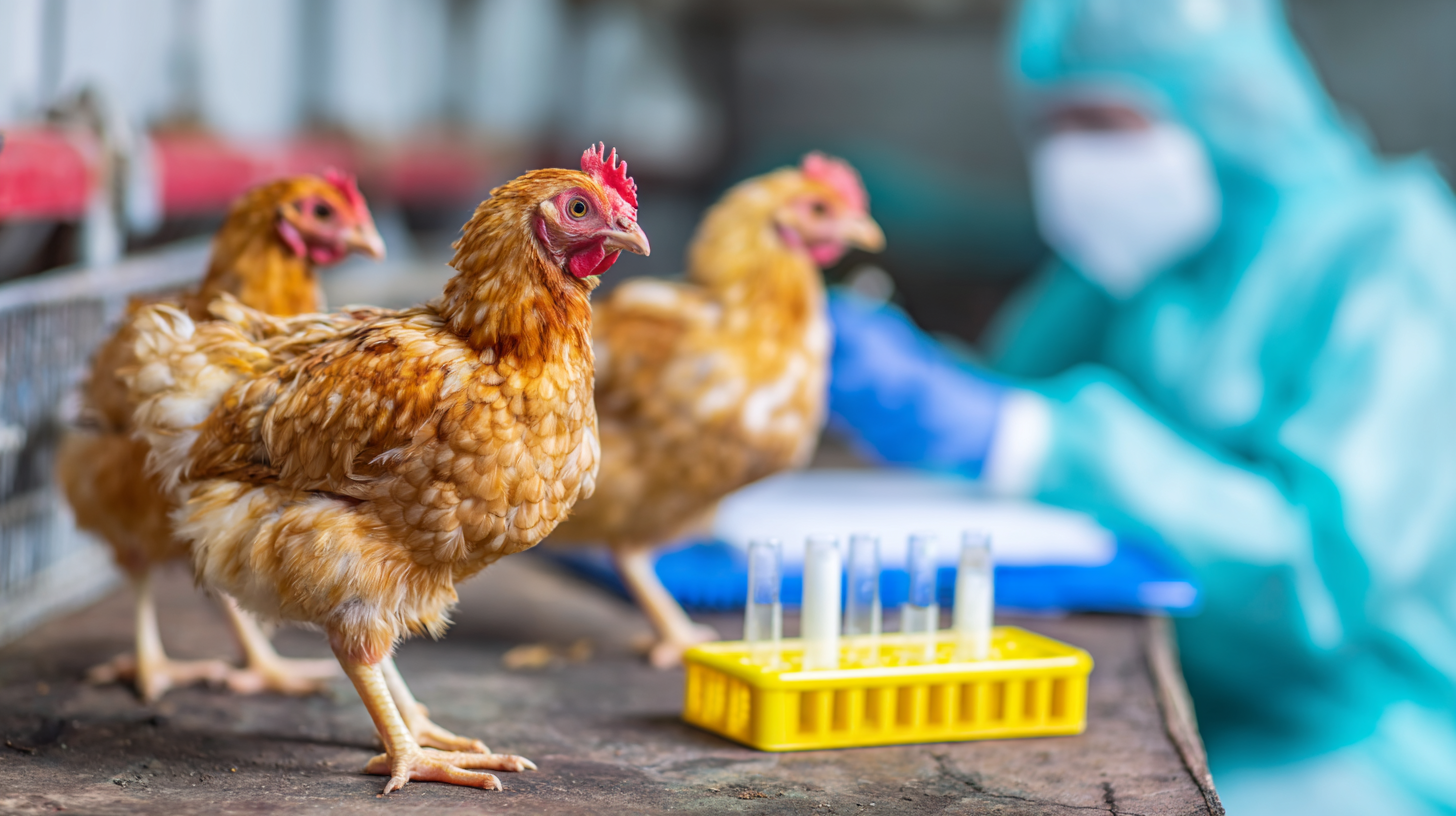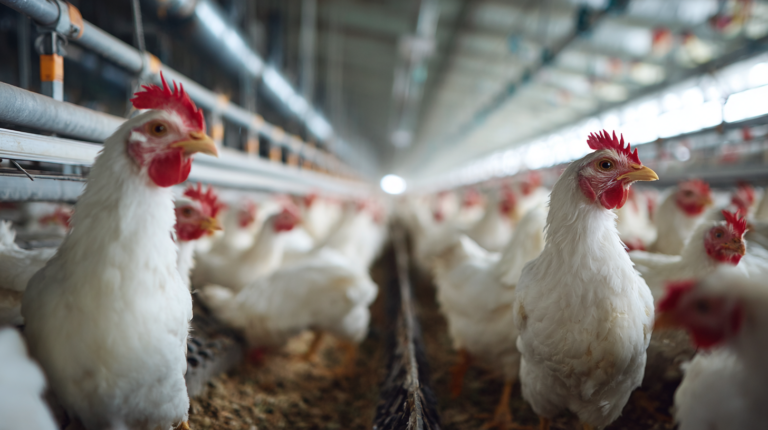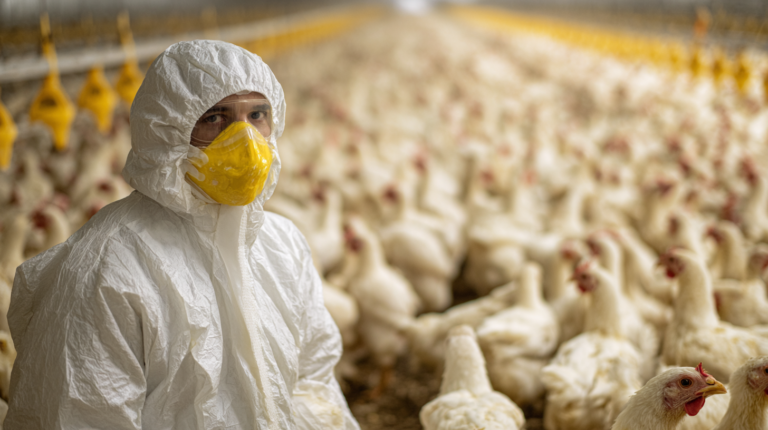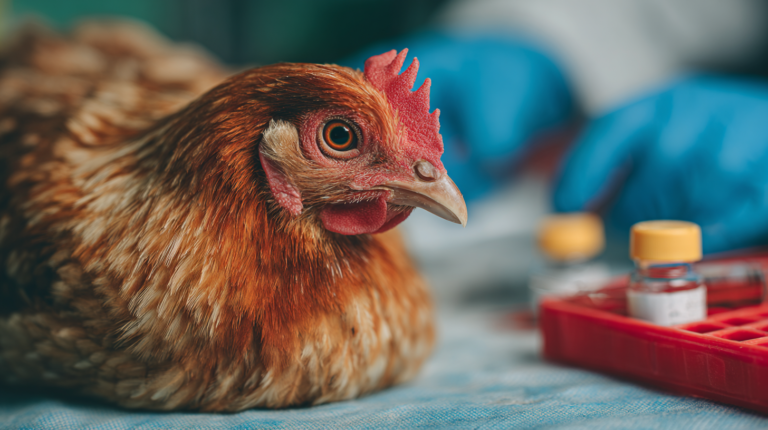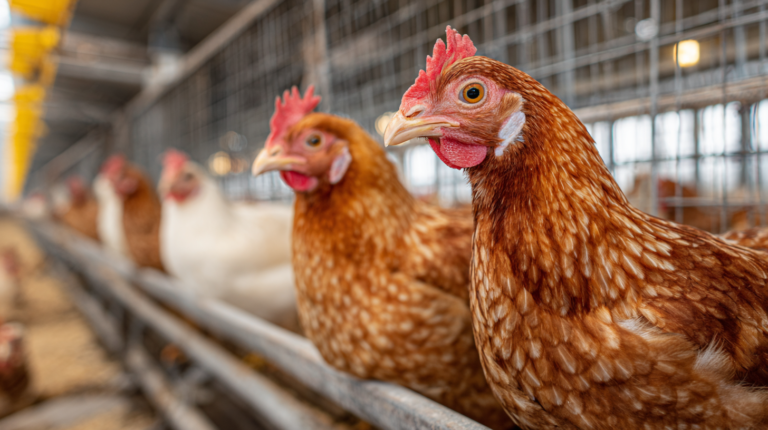Discover the 7 critical warning signs of Salmonella in poultry. Learn prevention, treatment, and when to seek veterinary care for your backyard chickens.
Table of Contents
Salmonella in poultry represents one of the most significant health challenges facing both backyard chicken enthusiasts and commercial poultry operations worldwide. This bacterial infection, caused by various strains of Salmonella bacteria, can devastate entire flocks while posing serious risks to human health through zoonotic transmission. Understanding the warning signs, prevention strategies, and treatment options is crucial for anyone involved in poultry keeping, whether you’re maintaining a small backyard coop or managing a larger operation.
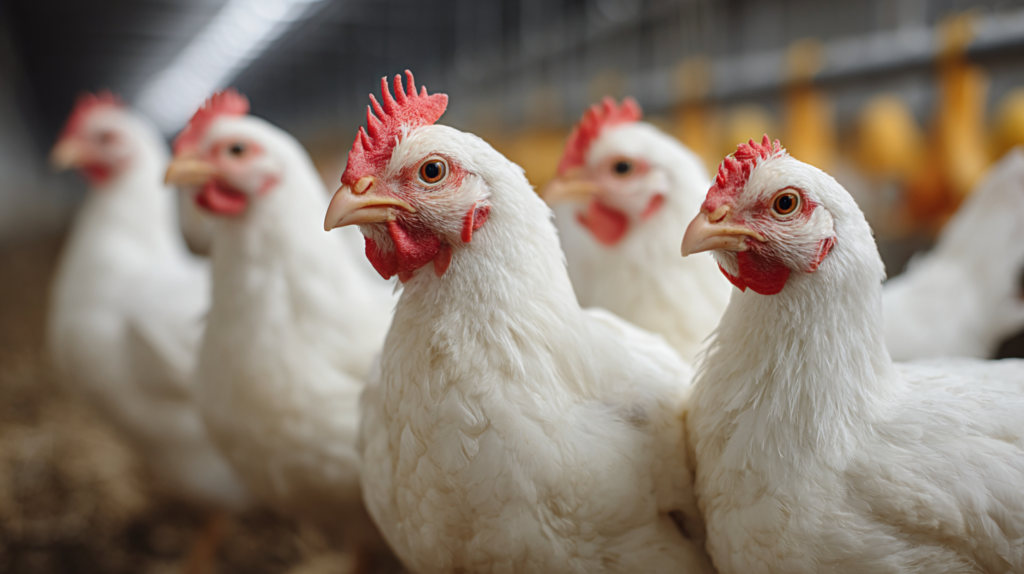
The prevalence of Salmonella in poultry has increased dramatically over the past decade, with the Centers for Disease Control and Prevention (CDC) reporting over 1,000 human cases annually linked directly to contact with infected poultry. This alarming trend underscores the critical importance of early detection and proper management protocols. Recent veterinary studies indicate that up to 25% of backyard poultry flocks may carry Salmonella bacteria, often without showing obvious clinical symptoms, making vigilant observation essential for flock health and human safety.
Salmonella in Poultry: The Silent Threat
| Warning Sign | Description | Severity | Time to Appear |
|---|---|---|---|
| 1. Lethargy & Weakness | Sudden onset of reduced activity, reluctance to move, drooping posture | High | 12-72 hours |
| 2. Diarrhea Patterns | Watery, greenish-yellow droppings with distinctive foul odor | High | 24-48 hours |
| 3. Respiratory Distress | Labored breathing, gasping, mouth breathing, nasal discharge | Medium | 2-5 days |
| 4. Appetite Loss | Decreased feed consumption, avoidance of food and water | Medium | 1-3 days |
| 5. Egg Abnormalities | Reduced production, thin shells, abnormal shape or color | Low | 3-7 days |
| 6. Neurological Signs | Head tilting, circling, tremors, loss of coordination | High | 3-10 days |
| 7. Physical Changes | Ruffled feathers, pale comb, dehydration, weight loss | Medium | 2-5 days |
Salmonella bacteria encompass over 2,500 different serotypes, with several strains particularly adapted to infect poultry species. The most concerning strains include Salmonella Enteritidis, Salmonella Typhimurium, and Salmonella Pullorum, each presenting unique challenges for detection and treatment. These gram-negative bacteria can survive in various environmental conditions, making them particularly persistent in poultry environments.
The pathophysiology of Salmonella infection in poultry involves bacterial colonization of the intestinal tract, followed by systemic spread through the bloodstream. This process can occur rapidly, with bacteria reaching vital organs within 24 to 48 hours of initial exposure. The bacteria’s ability to survive intracellularly within macrophages allows for persistent infection, often resulting in asymptomatic carriers that continue shedding bacteria in their feces for extended periods.
Environmental factors play a crucial role in Salmonella transmission and survival. Temperature fluctuations, humidity levels, and sanitation practices directly impact bacterial viability and spread within poultry populations. Research conducted by the American Veterinary Medical Association demonstrates that Salmonella can survive in dried feces for up to 28 months under optimal conditions, highlighting the importance of comprehensive biosecurity measures.
The economic impact of Salmonella in poultry extends far beyond immediate treatment costs. Infected flocks often experience reduced egg production, decreased hatchability, and increased mortality rates. The United States Department of Agriculture estimates that Salmonella-related losses in the poultry industry exceed $3 billion annually, encompassing both direct losses and regulatory compliance costs.
The 7 Critical Warning Signs of Salmonella in Poultry
1. Sudden Onset of Lethargy and Weakness
The first and often most subtle sign of Salmonella infection in poultry manifests as unexplained lethargy and general weakness. Affected birds may appear less active than usual, spending increased time sitting or lying down rather than engaging in normal foraging behaviors. This symptom typically develops within 12 to 72 hours after initial bacterial exposure, making it one of the earliest indicators of infection.
Observant poultry keepers should monitor for changes in daily activity patterns, particularly noting birds that separate themselves from the flock or show reluctance to move when approached. Healthy chickens typically demonstrate consistent energy levels throughout the day, with predictable patterns of feeding, drinking, and social interaction. Any deviation from these established behaviors warrants immediate attention and closer observation.
The physiological basis for this lethargy stems from the body’s immune response to bacterial invasion. As Salmonella bacteria multiply within the intestinal tract, the immune system diverts significant energy resources toward fighting the infection. This metabolic shift results in reduced energy availability for normal activities, manifesting as the observable lethargy that characterizes early-stage infection.
Veterinary professionals recommend implementing daily health checks that include observation of individual bird behavior, noting any changes in activity levels or social interactions. Early detection of lethargy can significantly improve treatment outcomes and prevent disease spread throughout the flock.
2. Distinctive Diarrhea Patterns and Consistency Changes
Diarrhea represents one of the most reliable indicators of Salmonella infection in poultry, though the specific characteristics can vary depending on the bacterial strain and infection severity. Infected birds typically produce loose, watery droppings that may contain mucus, blood, or unusual coloration. The consistency often changes from normal, well-formed feces to liquid or semi-liquid discharge.
The color variations in diarrheal output provide valuable diagnostic information. Yellow or green-tinged diarrhea often indicates liver involvement, while bloody or dark-colored discharge suggests intestinal inflammation and potential tissue damage. White or chalky diarrhea may indicate kidney involvement, representing a more advanced stage of infection requiring immediate veterinary intervention.
Frequency changes accompany consistency alterations, with infected birds often producing significantly more frequent bowel movements than healthy individuals. This increased frequency results from intestinal irritation and inflammation caused by bacterial colonization. The volume of individual droppings typically decreases while frequency increases, creating a distinctive pattern recognizable to experienced poultry keepers.
Proper monitoring requires regular inspection of coop areas, particularly around feeding and watering stations where droppings naturally accumulate. Establishing baseline knowledge of normal dropping appearance and frequency for your specific flock enables rapid identification of abnormal patterns that may indicate Salmonella infection.
3. Respiratory Distress and Breathing Abnormalities
Respiratory symptoms in Salmonella-infected poultry often develop as secondary complications rather than primary infection signs. However, these symptoms can become severe and life-threatening if left untreated. Affected birds may exhibit labored breathing, open-mouth breathing, or unusual respiratory sounds including wheezing or rattling.
The respiratory manifestations typically result from systemic bacterial spread affecting the air sacs and respiratory tract. In severe cases, Salmonella can cause pneumonia or air sacculitis, leading to significant breathing difficulties. Young birds and immunocompromised individuals are particularly susceptible to respiratory complications from Salmonella infection.
Observable signs include increased breathing rate, visible chest movement during respiration, and positioning changes that facilitate easier breathing. Birds may extend their necks, keep their beaks open, or assume unusual postures to improve airflow. These compensatory behaviors indicate significant respiratory distress requiring immediate veterinary attention.
Environmental factors can exacerbate respiratory symptoms in Salmonella-infected birds. Poor ventilation, high ammonia levels, and dusty conditions compound breathing difficulties, potentially accelerating disease progression. Maintaining optimal environmental conditions becomes crucial for supporting respiratory function during treatment.
4. Decreased Appetite and Feed Consumption
Appetite suppression represents a consistent early warning sign of Salmonella infection in poultry, often preceding other clinical symptoms by 12 to 24 hours. Infected birds typically show reduced interest in feed, decreased consumption volumes, and altered feeding behaviors that observant keepers can readily identify.
The physiological mechanism behind appetite suppression involves bacterial toxins affecting the central nervous system’s appetite control centers. Additionally, intestinal inflammation and discomfort directly impact feeding motivation, creating a cascade effect that compounds nutritional deficiencies and weakens immune response.
Monitoring feed consumption requires systematic observation of individual bird eating habits and overall flock consumption patterns. Healthy birds typically maintain consistent feeding schedules and demonstrate competitive behavior around feed sources. Infected individuals often withdraw from competitive feeding situations and may approach feed sources less frequently.
Quantitative measurement of feed consumption provides objective data for assessing flock health status. Establishing baseline consumption rates for your specific flock size and age enables rapid identification of concerning decreases that may indicate disease onset. Commercial poultry operations often use automated feeding systems that provide precise consumption data, while smaller operations may rely on visual observation and manual measurement techniques.
5. Egg Production Abnormalities and Quality Changes
Salmonella infection significantly impacts egg production in laying hens, causing both quantitative and qualitative changes that serve as important diagnostic indicators. Infected birds typically experience dramatic decreases in egg production, often dropping by 50% or more within the first week of infection. This reduction occurs even in birds that don’t exhibit other obvious clinical symptoms.
Egg quality changes accompany production decreases, with infected hens producing eggs with thin, fragile shells, unusual coloration, or abnormal contents. The albumen may appear watery or discolored, while yolk consistency and color can vary significantly from normal standards. These changes result from bacterial interference with the egg formation process within the reproductive tract.
Internal egg contamination represents a serious public health concern, as Salmonella bacteria can penetrate the shell and contaminate egg contents. The CDC estimates that approximately 1 in 20,000 eggs may be contaminated with Salmonella, with higher contamination rates in eggs from infected flocks. This contamination can occur during egg formation within the hen’s reproductive tract or through shell penetration after laying.
Proper egg handling and testing protocols become crucial when Salmonella infection is suspected. Eggs from potentially infected flocks should be thoroughly cooked to internal temperatures of 160°F (71°C) to eliminate bacterial contamination. Many veterinarians recommend temporarily discontinuing egg consumption from suspected flocks until bacterial testing confirms the absence of Salmonella.
6. Neurological Symptoms and Behavioral Changes
Neurological manifestations of Salmonella infection in poultry can range from subtle behavioral changes to dramatic neurological dysfunction. These symptoms typically develop in advanced cases or when specific bacterial strains with neurotropic properties are involved. Affected birds may exhibit head tilting, circling behavior, tremors, or seizures.
The pathophysiology of neurological symptoms involves bacterial invasion of the central nervous system, either through direct infection or toxic effects of bacterial byproducts. Certain Salmonella strains demonstrate particular affinity for nervous tissue, causing more severe neurological symptoms than others. Young birds appear more susceptible to neurological complications due to their developing nervous systems.
Behavioral changes often precede obvious neurological symptoms, making careful observation crucial for early detection. Infected birds may demonstrate altered social behaviors, including isolation from the flock, reduced responsiveness to environmental stimuli, or changes in normal activity patterns. These subtle changes can provide valuable early warning signs for attentive poultry keepers.
Treatment of neurological symptoms requires aggressive antibiotic therapy and supportive care. However, the prognosis for birds with severe neurological involvement remains guarded, with many cases resulting in permanent neurological damage or death. Early intervention based on recognition of initial behavioral changes significantly improves treatment outcomes.
7. Physical Appearance Changes and Feather Quality
Physical appearance changes in Salmonella-infected poultry often develop gradually but provide important visual indicators of infection status. Affected birds may exhibit ruffled feathers, dull or lackluster plumage, pale combs and wattles, or overall poor body condition. These changes reflect the systemic nature of Salmonella infection and its impact on overall health status.
Feather quality deterioration results from nutritional deficiencies caused by decreased feed consumption and malabsorption. The bacterial infection interferes with normal digestive processes, reducing nutrient availability for feather maintenance and growth. Additionally, the immune system’s energy demands during infection reduce resources available for maintaining external appearance.
Comb and wattle color changes provide reliable indicators of circulation and oxygenation status. Healthy birds typically maintain bright red combs and wattles, while infected individuals often display pale, dusky, or cyanotic coloration. These changes reflect the systemic effects of bacterial infection on cardiovascular function and oxygen transport.
Body condition scoring becomes important for assessing infection severity and treatment response. Infected birds often experience rapid weight loss due to decreased appetite and increased metabolic demands. Regular handling and palpation of individual birds enables detection of condition changes that may not be apparent through visual observation alone.
Prevention Strategies: Building a Salmonella-Free Environment
| Prevention Strategy | Implementation Details | Effectiveness | Cost |
|---|---|---|---|
| Biosecurity Protocols | Restricted access, foot baths, protective clothing, visitor logs | Very High | Medium |
| Feed Management | Heat-treated feed, proper storage, avoid contaminated sources | High | Low |
| Water Sanitation | Clean water sources, regular testing, chlorination systems | High | Low |
| Facility Cleaning | Daily coop cleaning, EPA-approved disinfectants, organic matter removal | High | Medium |
| Pest Control | Rodent exclusion, insect management, wild bird deterrents | Medium | Medium |
| Health Monitoring | Regular health checks, bacterial testing, veterinary consultations | Very High | High |
| Vaccination Programs | Risk-based vaccination, veterinary guidance, proper storage | Medium | High |
| Quarantine Procedures | New bird isolation, separate facilities, health screening | High | Low |
Effective Salmonella prevention requires comprehensive biosecurity measures addressing all potential transmission routes. The foundation of prevention lies in understanding that Salmonella bacteria can survive in various environmental conditions and spread through multiple vectors including contaminated feed, water, equipment, and human contact.
Quarantine protocols represent the first line of defense against Salmonella introduction. New birds should undergo a minimum 30-day quarantine period in completely separate facilities before integration with existing flocks. During quarantine, birds should receive thorough health examinations, including bacterial testing for Salmonella and other pathogens. This isolation period allows for observation of any developing clinical signs and prevents disease introduction to healthy populations.
Feed and water management constitute critical components of Salmonella prevention programs. Feed should be sourced from reputable suppliers with documented quality control programs and stored in sealed containers that prevent contamination from rodents, wild birds, and environmental sources. Water systems require regular cleaning and disinfection, with particular attention to areas where biofilm formation may occur.
Environmental sanitation protocols must address all aspects of the poultry environment, including housing, equipment, and surrounding areas. Regular cleaning schedules should incorporate approved disinfectants effective against Salmonella bacteria. Organic matter removal is essential before disinfection, as bacteria can survive within protective organic matrices that reduce disinfectant efficacy.
Rodent and pest control programs play crucial roles in preventing Salmonella transmission. Rodents serve as significant reservoir hosts for Salmonella bacteria and can contaminate feed, water, and environmental surfaces. Effective pest control requires integrated approaches combining exclusion methods, baiting programs, and environmental modifications that reduce pest habitat availability.
Treatment Protocols and Veterinary Intervention
| Timeline Phase | Diagnostic Actions | Treatment Protocol | Priority Level |
|---|---|---|---|
| Immediate (0-24 hours) |
|
|
Urgent |
| Short-term (1-3 days) |
|
|
High |
| Medium-term (4-14 days) |
|
|
High |
| Recovery (2-4 weeks) |
|
|
Medium |
| Long-term (1-3 months) |
|
|
Medium |
Successful Salmonella treatment requires prompt veterinary intervention and comprehensive therapeutic protocols addressing both bacterial elimination and supportive care. The selection of appropriate antibiotics depends on bacterial sensitivity testing, infection severity, and individual bird characteristics including age, species, and concurrent health conditions.
Antibiotic selection should be based on culture and sensitivity testing results whenever possible. Common antibiotics used for Salmonella treatment include fluoroquinolones, tetracyclines, and sulfonamides, though resistance patterns vary geographically and between bacterial strains. The duration of treatment typically ranges from 7 to 14 days, depending on infection severity and individual response.
Supportive care measures are crucial for treatment success and may include fluid therapy, nutritional support, and environmental modifications. Dehydrated birds require careful fluid replacement, either through oral administration or more aggressive parenteral routes in severe cases. Nutritional support may involve hand-feeding or tube feeding in birds with severely compromised appetites.
Probiotic supplementation has shown promise in supporting recovery from Salmonella infection by promoting beneficial gut bacteria populations. These products can help restore normal intestinal microbiota balance disrupted by antibiotic therapy and bacterial infection. However, probiotic use should complement, not replace, appropriate antibiotic treatment.
Monitoring treatment response requires regular clinical evaluation and follow-up testing. Birds should be re-examined every 2-3 days during treatment to assess clinical improvement and identify any complications. Post-treatment bacterial testing helps confirm bacterial elimination and prevents relapse or continued transmission.
This comprehensive visual guide would display each warning sign with accompanying illustrations and brief descriptions, making it easy for poultry keepers to quickly reference and identify potential problems. The infographic would use a color-coded system with green indicating healthy birds, yellow for early warning signs, and red for serious symptoms requiring immediate veterinary attention.
Public Health Implications and Zoonotic Risks
The zoonotic potential of Salmonella in poultry creates significant public health implications that extend far beyond flock health concerns. Human infections can occur through direct contact with infected birds, contaminated eggs, or environmental contamination from infected flocks. The CDC reports that backyard poultry-associated Salmonella outbreaks have increased substantially over the past decade, with over 1,000 human cases annually.
Children, elderly individuals, and immunocompromised persons face particularly high risks from Salmonella exposure. These vulnerable populations may develop severe complications including bacteremia, meningitis, or other life-threatening conditions. Pregnant women face additional risks, as Salmonella infection can cause pregnancy complications and potential fetal harm.
Personal hygiene protocols become crucial when working with poultry, particularly when Salmonella infection is suspected or confirmed. Proper handwashing techniques, protective clothing, and equipment disinfection can significantly reduce transmission risks. Children should be supervised closely around poultry and taught appropriate hygiene practices.
Food safety considerations require special attention to egg handling, preparation, and consumption. Eggs from potentially infected flocks should be thoroughly cooked to internal temperatures of 160°F (71°C) to eliminate bacterial contamination. Raw or undercooked eggs should be avoided entirely when Salmonella infection is suspected within the flock.
Regulatory Considerations and Reporting Requirements
Salmonella detection in poultry may trigger various regulatory requirements depending on local, state, and federal regulations. Many jurisdictions require reporting of certain Salmonella serotypes to public health authorities, particularly those with high zoonotic potential or involvement in human disease outbreaks.
The National Poultry Improvement Plan (NPIP) provides voluntary certification programs for Salmonella-free flocks, offering marketing advantages and regulatory compliance benefits. Participation requires regular testing, biosecurity compliance, and maintaining detailed health records. These programs provide valuable frameworks for disease prevention and control.
Veterinary oversight becomes essential for regulatory compliance and optimal treatment outcomes. Licensed veterinarians can provide guidance on testing protocols, treatment options, and regulatory requirements specific to your location and operation type. Professional veterinary involvement also ensures appropriate antibiotic use and helps prevent resistance development.
Record-keeping requirements may include documentation of health observations, treatment protocols, testing results, and mortality records. Comprehensive records provide valuable information for disease investigation and help demonstrate compliance with regulatory requirements. Digital record-keeping systems can streamline this process while providing easy access to historical data.
Recovery and Long-term Management
Recovery from Salmonella infection requires comprehensive management addressing both immediate treatment needs and long-term flock health maintenance. The recovery period typically extends 2-4 weeks beyond clinical symptom resolution, during which birds may continue shedding bacteria intermittently.
Post-treatment monitoring protocols should include regular clinical examinations, bacterial testing, and environmental assessment. Birds may appear clinically normal while continuing to shed bacteria, making laboratory testing essential for determining true recovery status. Environmental testing helps identify potential contamination sources that could cause reinfection.
Flock rebuilding strategies may be necessary following severe Salmonella outbreaks. This process involves comprehensive environmental decontamination, quarantine protocols for new birds, and enhanced biosecurity measures. The timing of flock rebuilding depends on bacterial persistence in the environment and the effectiveness of decontamination efforts.
Long-term prevention requires ongoing vigilance and maintenance of biosecurity protocols. Regular health monitoring, environmental testing, and vaccination programs (where appropriate) help maintain flock health and prevent disease recurrence. Continuous education and training for all personnel involved in poultry care ensures consistent application of prevention measures.
Frequently Asked Questions
Everything you need to know about Salmonella in Poultry
No questions found matching your search. Try different keywords.
For more expert pet care tips and product recommendations, visit BlithePet.com — your trusted source for pet wellness.
Conclusion
Salmonella in poultry represents a serious health challenge requiring vigilant monitoring, rapid intervention, and comprehensive prevention strategies. The seven warning signs outlined in this article provide crucial early indicators that can mean the difference between successful treatment and devastating flock losses. From subtle behavioral changes like lethargy and decreased appetite to more obvious symptoms including diarrhea and respiratory distress, each sign offers valuable opportunities for early detection and intervention.
The complexity of Salmonella infections demands professional veterinary involvement for accurate diagnosis, appropriate treatment selection, and monitoring of treatment response. While this article provides comprehensive information about recognition and management, it cannot replace the expertise and clinical judgment of qualified veterinary professionals. Establishing relationships with experienced avian veterinarians before problems arise ensures rapid access to professional care when needed.
Prevention remains the most effective approach to managing Salmonella risks in poultry operations. Comprehensive biosecurity protocols, regular health monitoring, and proper environmental management create the foundation for healthy flocks and reduced disease transmission. These prevention strategies benefit not only poultry health but also protect human health through reduced zoonotic disease risks.
The public health implications of Salmonella in poultry extend far beyond individual flock health, affecting families, communities, and the broader food supply. Responsible poultry keeping includes understanding these risks and implementing appropriate measures to protect both animal and human health. This responsibility becomes particularly important as backyard poultry keeping continues to grow in popularity across diverse communities.
Recovery from Salmonella infection requires patience, persistence, and continued vigilance. While successful treatment is possible with appropriate veterinary care, the process often involves extended treatment periods and ongoing monitoring. Long-term flock health depends on maintaining the prevention strategies and environmental management practices that help prevent reinfection and disease recurrence.
Have a similar experience with your pet? Share it in the comments below!

